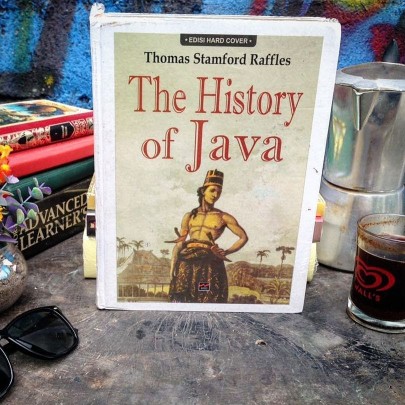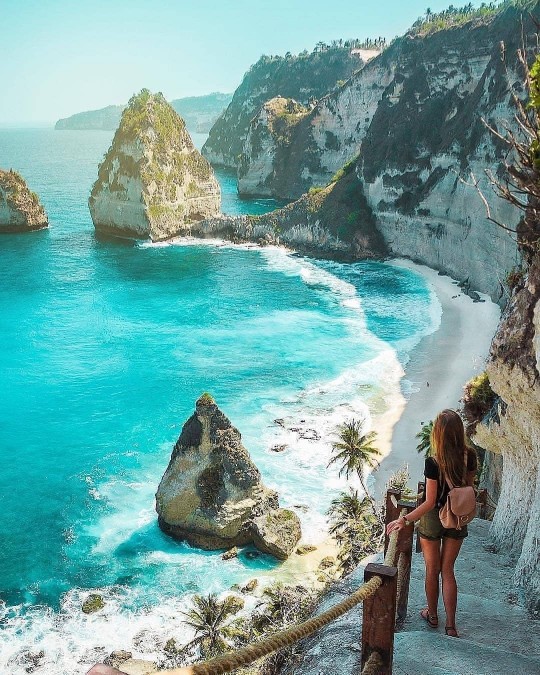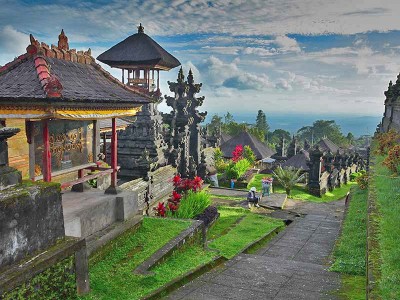javaprivatetour.com – Have you ever wondered why Semarang, the capital of Central Java, is so prone to flooding?
The answer lies in the city’s fascinating history. Believe it or not, Semarang was once a vast ocean!
The capital of Central Java has recently been hit by severe floods at the beginning of 2023. Floods ravaged vital points in Semarang, such as Semarang Tawang Station, the Old Town Area, Simpang Lima Semarang, and Marina Beach.
Not only that, Semarang also often experiences tidal floods when the sea level rises. This usually occurs in areas like Kaligawe, Gayamsari, and Semarang.
Behind these flood disasters lies a historical fact recorded on the official website of the Regional Development Planning Agency of DIY (Yogyakarta), stating that Semarang was once a sea.
From Sea to City
Around the 8th century AD, there was an area in Semarang called Pragota, now known as Bergota. This area was part of the ancient Mataram Kingdom and served as a port, with small islands in front of it. Due to sedimentation, these small islands merged to form land. The area now known as Lower Semarang used to be underwater.
The port of the ancient Mataram Kingdom was believed to be in what is now Pasar Bulu, extending into the Simongan Port, where Admiral Cheng Ho’s fleet anchored in 1405 AD. The Simongan Port has now transformed into the Ngemplak Simongan Subdistrict in Semarang.
The reason is that gradually, the area in Bergota Port began to turn into land. Now, the name Bergota has become a public cemetery.
Geological evidence also indicates that the Semarang area was once a sea, located in the Gisikdrono Village.
In that area, many shells of the Balamnus sp. species, which are characteristic of coastal areas, are found. This evidence was conveyed by Angga Jati Widiatama, a lecturer in Geological Engineering at the Sumatera Institute of Technology, on the kumparan.com website.

Then, why did this happen?
The main reason for the expansion of Semarang’s land is due to severe siltation at that time.
In fact, the coastline of Semarang has shifted about 7 kilometers. The areas around Tugu Muda and Lawang Sewu were actually coastal areas in ancient times.
Quoting from situsbabad.id, which cited Arief Budiman’s book “Sejarah Semarang” (The History of Semarang), Dutch geologist Prof. van Bemmelen mentioned that this coastline shift reached 8 meters per year.

Moreover, the areas around the temples, which are hills, were still affected by sea waves at the foothills.
That’s roughly the depiction of Semarang City in ancient times. It means that the coastal areas and ports of Semarang, even the Old Town area of Semarang, were previously underwater.
As additional information, it’s worth noting that this siltation is also related to how the Jepara region was once a separate island before merging with Java Island as it is today.
Which, severe siltation and sedimentation are similar natural events on the north coast of Java Island.
Witnesses from the Past: Sam Poo Kong Temple

The location of Sam Poo Kong Temple, which used to be the anchorage of Admiral Cheng Ho, is one of the proofs that Semarang was once submerged under the sea.
Quoting from the official website of Sam Poo Kong Temple, when Admiral Cheng Ho anchored at Simongan Beach in the early 14th century, it was because his helmsman, Wang Ji Hong, fell seriously ill. The nearby limestone cave was then utilized as Cheng Ho’s residence to treat his helmsman.
As Wang Ji Hong began to recover, Cheng Ho decided to continue his journey eastward for trade and peace missions. Eventually, Wang Ji Hong and his crew decided to settle in Simongan.
The coastal area and the port, which is now the Ngemplak Simongan Subdistrict, are located in the heart of Semarang, near the West Flood Canal.
A Flourishing Settlement
During their time in Simongan, Wang Ji Hong led his crew to cultivate the land, build houses, and interact with the locals. The surrounding environment flourished due to trade and agricultural activities. In honor of his leader, Wang erected a statue of Zheng He in the limestone cave to be revered and remembered by the local community. This statue in the limestone cave is the origin of the Sam Poo Kong Temple we see today.

Exploring Semarang’s Hidden History
Today, the Sam Poo Kong Temple stands as a testament to Semarang’s remarkable transformation from a seafaring city to a bustling metropolis.
Planning Your Semarang Adventure
If you’re planning a trip to Semarang, be sure to include the Sam Poo Kong Temple on your itinerary. This fascinating site offers a unique glimpse into the city’s rich history and cultural heritage.
For a truly immersive experience, consider booking a tour with Java Private Tour.
Why Choose Java Private Tour?
- Experienced English-speaking guides: Our guides are not only fluent in English, but they are also knowledgeable and passionate about Semarang’s history and culture.
- Flexible itineraries: We understand that every traveler is unique, which is why we offer customized tours that can be tailored to your interests and budget.
- Wide range of transportation options: Whether you prefer a sedan, van, or bus, we have a variety of vehicles to choose from to accommodate your group size and travel needs.
- Professional and licensed crew: Our drivers and guides are all certified professionals, ensuring you a safe and enjoyable travel experience.
- Recommended by embassies: Java Private Tour is the trusted choice of many embassies and international organizations, a testament to our high standards of service.
For first-time visitors to Java, Java Private Tour is the perfect way to explore this fascinating island and discover its hidden gems.
BOOK HERE today to start planning your unforgettable adventure!
You May Also Like
 Uncovering Buried History at Ereveld Menteng Pulo: An Unforgettable Experience
Uncovering Buried History at Ereveld Menteng Pulo: An Unforgettable Experience
 Uncovering the Stories and Symbolism of Lasem Batik: A Journey Through Javanese and Chinese Heritage
Uncovering the Stories and Symbolism of Lasem Batik: A Journey Through Javanese and Chinese Heritage
 Uncovering the Mystery of the Javan Rhinoceros: A Journey Through Bandung’s History
Uncovering the Mystery of the Javan Rhinoceros: A Journey Through Bandung’s History
 Uncovering the Forbidden: Unraveling the Mystery of the Two-Story House Ban in Karangkamulyan
Uncovering the Forbidden: Unraveling the Mystery of the Two-Story House Ban in Karangkamulyan
 Hiking in East Java: Uncovering the Mystery of Mount Butak
Hiking in East Java: Uncovering the Mystery of Mount Butak












